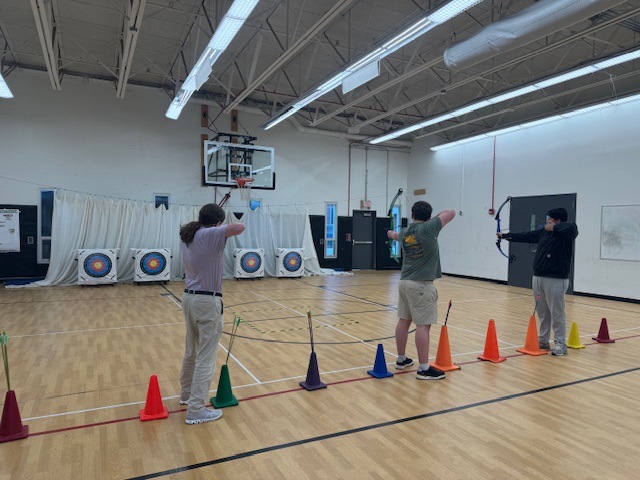When it was announced that our new building would be named the Grace Hopper Center, some common reactions were: ‘Why are they naming it that?’ ‘Who even is she?’ ‘I liked X name better.’. That was a while ago, but it doesn’t seem to have cleared up. So here, fellow ACC students, is the answer to all the questions you have, and should have been, asking. As to the who and why of it– Grace Hopper was pretty incredible. In her lifetime, she took on the roles of Rear Admiral of the Navy, one of the most influential programmers of the information age, an excellent lecturer, and something of a celebrity in her old age. So let’s get into it, shall we? 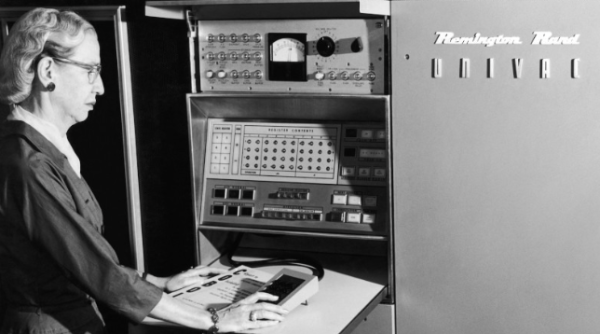
Grace Hopper was born in New York, New York in 1906. Yes, in case you weren’t tipped off by the black and white photograph/s, this was a ways back. She died in 1992, at the ripe old age of 86, right here in Arlington. I assume we are claiming her like Baltimore claims Edgar Allen Poe.
Hopper first appeared on the STEM scene with a BA from Vassar College in 1928, followed by an M.A. and a PhD from Yale in 1930 and 1934, respectively. She then became a mathematics professor at Vassar. It is at this time that her story turns- specifically, at Pearl Harbor.
After Pearl Harbor, American women were suddenly allowed to join the workforce in roles that had been completely inaccessible to them before. Hopper was one of a multitude of women who took advantage of that- she divorced her husband, left her tenure-track position at Vassar, and joined the Navy as a reservist. Hopper didn’t see action; Instead, she was sent to work with a team of computer scientists at Harvard. According to Harvard, they were working on the Mark I, designed by Howard Aiken, which was the predecessor of the electronic computer (the ones that took up entire rooms). 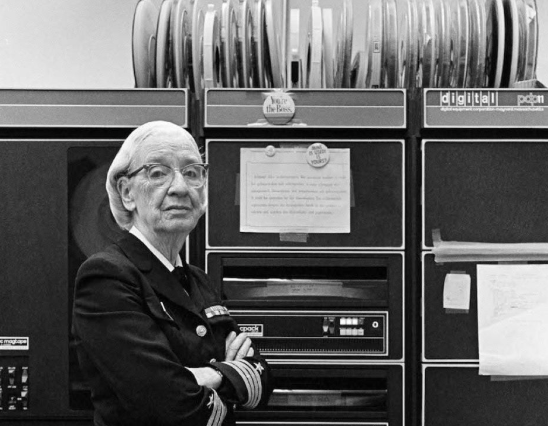 When commercial electronic computers were created, she was leading the team that created them. According to Britannica it was during this time that Hopper wrote the first computer manual, A Manual of Operation for the Automatic Sequence Controlled Calculator in 1946, “which described how to operate Mark I and was the first extensive treatment of how to program a computer”. Harvard describes the book as “a task so monumental that she referred to her project as a computer ‘bible.’”
When commercial electronic computers were created, she was leading the team that created them. According to Britannica it was during this time that Hopper wrote the first computer manual, A Manual of Operation for the Automatic Sequence Controlled Calculator in 1946, “which described how to operate Mark I and was the first extensive treatment of how to program a computer”. Harvard describes the book as “a task so monumental that she referred to her project as a computer ‘bible.’”
Also, during her time at Harvard, Hopper was famously on the team that found the first computer bug. This may seem confusing to some computer history buffs, since the term ‘computer bug’ was used as far back as the 1870s- but this wasn’t a computer bug in the sense you might be thinking of. Specifically, this was a moth. Found within a component of the Mark I, this bug was then taped into a logbook, captioned with ‘first actual case of [a] bug being found’ as can be seen in the photo from the National Museum of American History. A story she often told during lectures, this insect was part of her fame.
After she left Harvard in 1949, due to their lack of permanent positions for women, she became head programmer on the team of the Eckert-Mauchly Computer Corporation, who had built the groundbreaking ENIAC computer during World War II. According to Britannica, though, the UNIVAC was a peacetime machine, firmly bringing computers into the hands of business, where they have been ever since. It was a replacement of the punch-card accounting machines of the day, and was noticeably smaller than its predecessors (though still the size of a large bedroom- quite different from the computers we hold in our hands today!) This machine was vital to moving into a new technological era. The Census Bureau states that “UNIVAC I, as the first successful civilian computer, was a key part of the dawn of the computer age”. She also designed one of the first compilers and compiler-based programming languages and coined the term Compiler. According to Yale, “In 1953, Hopper proposed the idea of writing programs in words, rather than symbols, but she was told her idea would not work. Nevertheless, she continued working on an English-language compiler, and in 1956 her team was running FLOW-MATIC, the first programming language to use word commands”. As computers became more common, a conference was held to find a standardized programming language for business. Hopper was in attendance and was instrumental to the design. The result was COBOL- the most widely used business programming language in history. 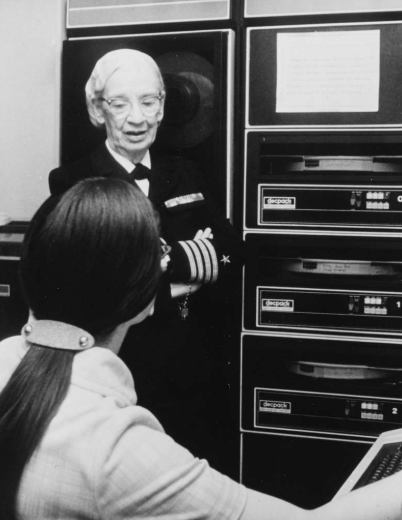
On the other side of her career, she was promoted repeatedly in the Navy, once by congress after a senator heard her speak on a 60 Minutes broadcast interview (she was actually promoted AGAIN after this). This continued until she reached the rank of rear admiral. I know jack about the Navy, but that sounds impressive, right?
However, before lauding her as a singular pioneer, you need to understand something. In his book, Grace Hopper and the Invention of the Information Age, Kurt W. Beyer wrote about the ‘Grace Hopper myth’- basically the idea that she invented computer programming and the first electronic computer. All on her own. While she was insanely intelligent and driven, she wasn’t superhuman- essentially all of her accomplishments were made on teams, and a failure to remember that does a disservice to her and others. So why is she the one who’s remembered? She is remembered due to her lectures, interviews, and speeches, most of which occurred in her late life. It was due to how far she went, within an era that, while not as repressive for women as some, was certainly still a struggle; it was due to her dedication- to the Navy, and to mathematics and computers; it was due to her personality- she was irreverent, confident, funny, and fierce. Hopper was intelligent and uncrushable and driven- from her childhood, to her retirement as the oldest serving naval officer in 1986, to her death in 1992. Hopper is buried right here, in Arlington National Cemetery, only three miles from the building that will be named in her honor.
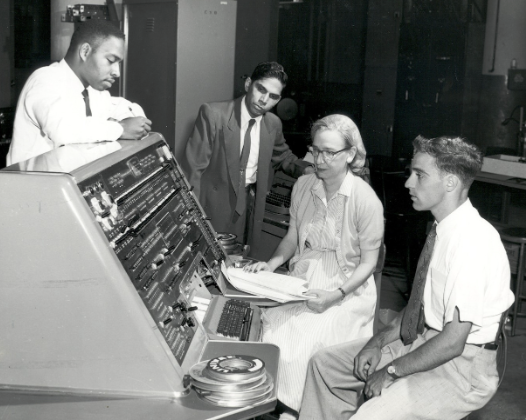 Grace Hopper would have been proud to be connected to the continuing education of younger generations about STEM. Despite her incredible computational achievements, Hopper said that “If you ask me what accomplishment I’m most proud of, the answer would be all the young people I’ve trained over the years; that’s more important than writing the first compiler.” This name- Grace Hopper Center- is doused in the history of STEM; it is a symbol of feminism, strength, perseverance, and intelligence without arrogance. It’s a sign of change for the better, of pushing ourselves and our school to be the best they can be, even when it might be difficult. So with this article, I hope you’ve learned a bit about who she was, what she stood for, and why it should inspire you to reach farther than you thought you could, even when it scares you- as Grace Hopper once said, “A ship in port is safe, but that’s not what ships are built for.”
Grace Hopper would have been proud to be connected to the continuing education of younger generations about STEM. Despite her incredible computational achievements, Hopper said that “If you ask me what accomplishment I’m most proud of, the answer would be all the young people I’ve trained over the years; that’s more important than writing the first compiler.” This name- Grace Hopper Center- is doused in the history of STEM; it is a symbol of feminism, strength, perseverance, and intelligence without arrogance. It’s a sign of change for the better, of pushing ourselves and our school to be the best they can be, even when it might be difficult. So with this article, I hope you’ve learned a bit about who she was, what she stood for, and why it should inspire you to reach farther than you thought you could, even when it scares you- as Grace Hopper once said, “A ship in port is safe, but that’s not what ships are built for.”


































